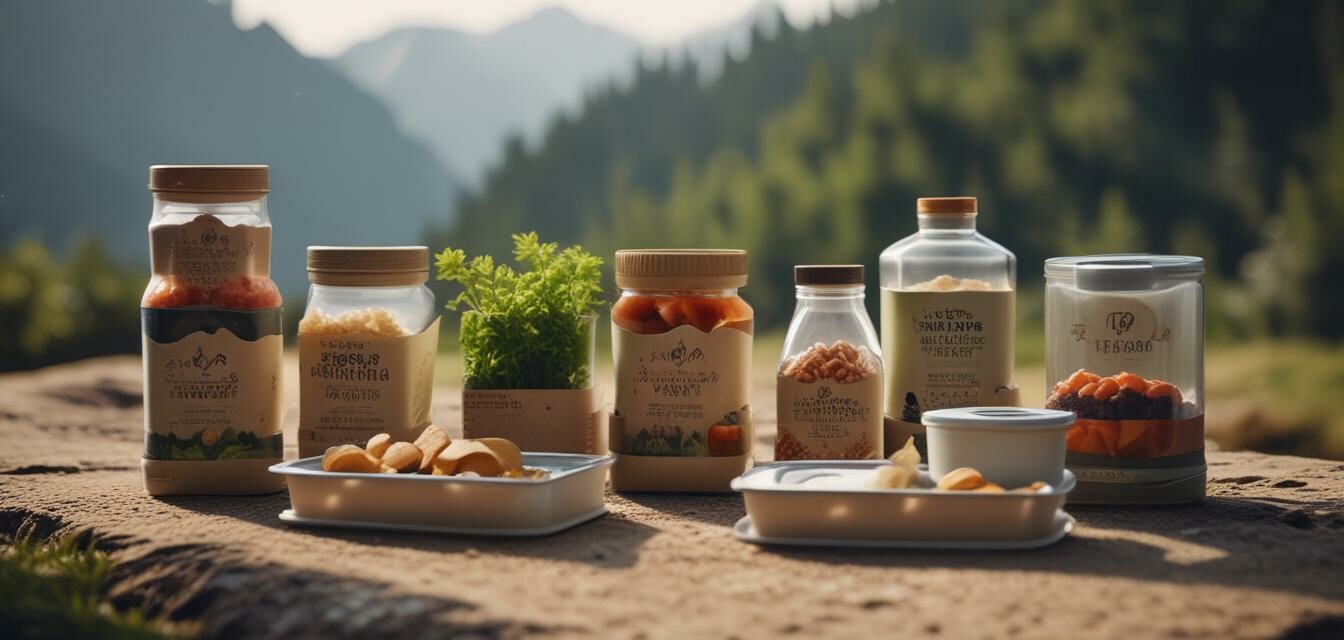
As an Amazon Associate, I earn from any qualifying purchases, at No Extra Cost to You.
The future of food packaging in backpacking
Key takeaways
- Focus on sustainability is increasing in food packaging for backpackers.
- Convenience plays a crucial role, especially for lightweight packing.
- Minimizing waste on the trail is vital for preserving natural environments.
- Innovations in materials open new possibilities for outdoor enthusiasts.
- Collaboration between backpackers and product developers leads to better products.
As more people are drawn to the great outdoors, backpackers are becoming increasingly aware of their environmental impact. The future of food packaging in backpacking is evolving rapidly, adapting to the needs of eco-conscious adventurers while emphasizing convenience and waste reduction. Let’s explore the exciting trends shaping this crucial aspect of backpacking gear.
Sustainability in food packaging
One of the leading trends in food packaging for backpackers is sustainability. Traditional options have often contributed to significant waste and environmental damage. However, new innovative materials are emerging as eco-friendly alternatives. Here are some notable developments:
| Material | Benefits |
|---|---|
| Bio-based plastics | Made from renewable resources, reducing reliance on fossil fuels. |
| Compostable packaging | Breaks down naturally, leaving no waste behind. |
| Recyclable materials | Reduces landfill waste when properly recycled. |
Convenience and functionality
Backpackers often prioritize lightweight and compact packaging solutions that do not compromise food quality. Some key aspects of convenience in food packaging include:
- Resealable options for easy access while on the trail.
- Portion control packaging to minimize food waste.
- Freeze-dried meals that maintain nutritional value without adding bulk.
Innovative packaging designs
Innovation is also driving the design of food packaging. Companies are focusing on the following trends:
- Flat-pack designs to save space in backpacks.
- Integrated cooking solutions, such as self-heating pouches.
- Water-resistant materials that protect food during hikes.
Minimizing waste on the trail
The backpacking community is increasingly advocating for waste minimization practices. Here’s a closer look at how these trends are addressed:
- Bulk buying options encourage backpackers to purchase food in larger quantities, reducing the amount of single-use packaging.
- Reusable containers and utensils eliminate the need for disposable items.
- Trail-friendly food brands promote sustainable packaging in all their products.
The role of collaborative efforts
These advancements often arise from collaboration between backpackers and manufacturers. This partnership generates valuable feedback that leads to better food packaging solutions. By interacting with the community, companies gain insights about:
- Common pain points associated with current food packaging.
- Preferences for types of meals and snacks on the go.
- Features that simplify the eating experience while backpacking.
Looking to the future
The future of food packaging in backpacking seems bright with ongoing innovations. As sustainability and convenience continue to trend, we can expect to see:
| Trend | Potential Impact |
|---|---|
| Increased use of eco-friendly materials | Reduces carbon footprint of backpackers. |
| Customizable meal kits | Enhances meal options with reduced waste. |
| Partnerships with environmental organizations | Encourages responsible practices and awareness. |
Pros
- Reduces environmental impact.
- Enhances convenience for backpackers.
- Minimizes waste during outdoor adventures.
Cons
- Higher costs of sustainable materials.
- Limited availability of certain eco-friendly options.
Conclusion
The backpacking community is at the forefront of a sustainable food packaging movement. As environmental awareness increases, backpackers are embracing packaging that aligns with their values while ensuring convenience on the trail. The trends of innovative materials, functional designs, and waste minimization will continue to shape the future of food packaging in backpacking. To stay updated on the latest backpacking trends, be sure to check out our Backpacking Trends section.